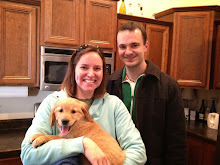- wheel well clearance is not an issue, even with wider tires (these wheels came with 245/60's on the back, and 195's up front).
- The extra space around the tires and wheel well lip give the car more of a muscle car stance because it looks raised rather than squatted (opinions will differ). I'm very much not a fan of the 17" wheel look where the entire opening is filled up with wheel and tire. It looks like a hot wheels car.
- I don't have to change out my speedometer gear.
 |
| I've included this picture as a reference to see the difference without the wheels. This is the other side of the car. |
Final Assembly and Masking
I did the final assembly of the rest of the car in preparation to paint the outside in its entirety. I don't tighten bolt-on parts such as fender and quarter extensions or valances down tightly because I want there to be a gap. This prevents paint from bridging the panels. Eventually that paint will crack and will look unsightly. After the painting is finished, I'll tighten everything up. Because I had done a test fit prior to this, I knew everything would fit perfectly and I knew where my problem areas were going to be, I knew how to adjust to fix them, and where to shim. I probably had close to 15-20 hr in the final assembly and getting all the gaps right. It was during this time I wet sanded the entire car with 600 grit as the final sanding step before a metallic basecoat.
 |
| I'm using these rubber washers underneath the fender bolts so they don't scratch the fenders up. It seemed like a good idea, but I guess I'll figure out really quickly if it was only good intentions. |
 |
| In its final assembly |
Masking
After assembly was complete, I drove the car into the booth, put it up high on jack stands to give me easier access to bottoms of panels when painting, and took the tires off. I am using 1.5" 3M yellow. I had used 3M green before, but it's hard to rip and is really sticky. The 3M yellow corners nicely, tears pretty well, and isn't notoriously sticky, yet it still sticks very well. I have also heard lots of good things about American Tape, but did not have a distributor nearby. I could have picked it up on Ebay.
Some cars you see masked up look like a beautiful work of art. I will probably never fall into that category, I want to be practical, functional, but not use 5 miles of tape either if it's unnecessary. I do care about not leaving a tape edge, so I do lots of back masking. Back masking provides for a rounded edge, rather than a hard edge, so there's a transition of paint and you can't tell it was ever masked. I'll explain in the captions.















